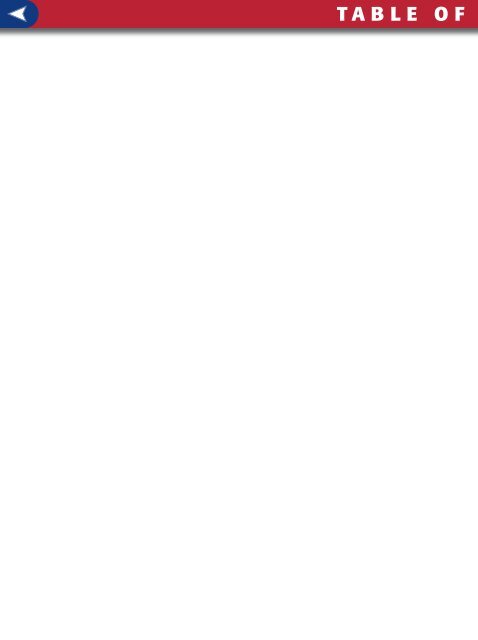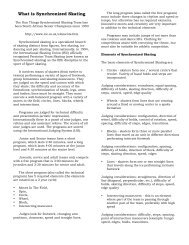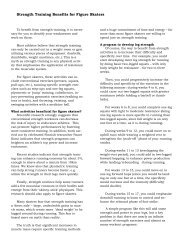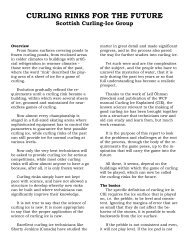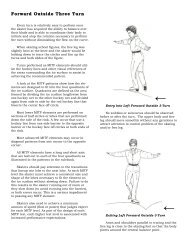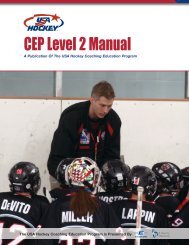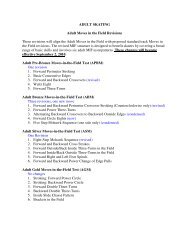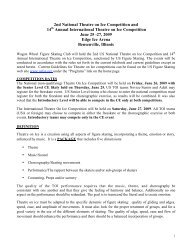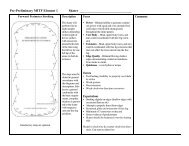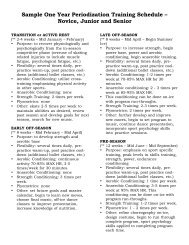CEP Level 3 Manual - Rushmore Hockey Association
CEP Level 3 Manual - Rushmore Hockey Association
CEP Level 3 Manual - Rushmore Hockey Association
Create successful ePaper yourself
Turn your PDF publications into a flip-book with our unique Google optimized e-Paper software.
T A B L E O F C O N T E N T SChapter 23Team PlayOBJECTIVES• Describe skills needed for successful team play in hockey• Outline the sequence to be used in introducing team play• Present some of the unique formations that are effective in youth hockeyTEAM DEFENSEThe two words that best describe team defenseis hard work. Players generally like to play defensebut often have a difficult time putting forth the effortnecessary to make team defense effective.If each defensive player does his job, defenseshould be no worse than one-on-one times five.The three major problems that cause this to breakdown are (1) somebody does not stay one-on-one(e.g., a forechecker does not backcheck), (2) ahighly-skilled offensive player beats a less-skilleddefensive player, or (3) the offense has theadvantage of knowing where it is going, how it willget there, and when. In each of these cases, thedefense adjusts and someone tries to help out(which is a must). But usually doing so makes itpossible for the offense to create a desired two-ononesituation.There are three conditions that the defense mustbe prepared to control.1. Even (one-on-one) – play the opponent2. More offensive players than defensive players(two-on-one) – play the puck Play close tothe defensive alley, thus encouraging theoffense to go outside to try to get to thegoal. In this situation, the defensive playershould (a) try to gain time so that a teammatecan get back to help or (b) give up a poorshot on goal by forcing the shooter to a badshooting angle. Above all, don’t let the twooffensive players get the puck into the slot.3. More defensive players than offensive players(one-on-two) – this is a good time to bodycheck the offensive player One defenderplays the opponent while the other takesthe puck.In a competitive game, it would be foolish forthe defensive team to think it could stop the offensefrom getting a shot (or shots) on goal. Normally, theoffensive team will get 25-30 shots on goal. Byplaying well, the defense may limit the offense tofewer than 20 shots, but it is suggested that a bettermeasure of success is for the defense to worktoward forcing the offense to take poorer shots ongoal. Conversely, the offense should try to increaseits shots on goal, but more importantly, should try toget better shots.Defensive Team Tactics | 271


